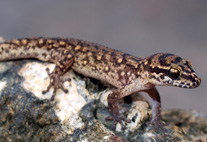Abstract
The genus Wahydra Steinhauser, 1991 was classified as Anthoptini together with other eight genera, based on the shape of the brand, hind tibial spurs and male genitalia, the species of Wahydra are scarcely represented in collections, therefore the taxonomic knowledge of the genus remains poorly explored. Aiming to contribute to the recognition and organization of the diversity of Wahydra, in the present study, four new species: Wahydra trinitas Henao, Mielke, Carneiro & Casagrande sp. nov., Wahydra curtis Mielke, Henao, Carneiro & Casagrande sp. nov., Wahydra shueyi Carneiro, Henao, Mielke & Casagrande sp. nov., and Wahydra mapiriensis Casagrande, Henao, Carneiro & Mielke sp. nov.; are describe. In addition Dalla curia Evans, 1955 is considered a syn. nov. of Wahydra tassa Evans, 1955, and Wahydra obscura is treated as a syn. nov. of Wahydra ekka Evans, 1955 comb. nov. Male genitalia is illustrated for all species, except for Wahydra dores (Bell, 1959) and Wahydra thisbe (Hayward, 1942). The female and genitalia of Wahydra vola (Evans, 1955) are described and illustrated here for the first time.

